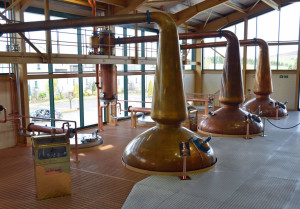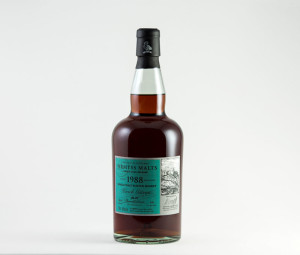By Richard Thomas
With roughly 100 active distilleries in Scotland, and that number on the rise, a whisky-lover could spend all their vacations on the Scotch trail and still not visit them all. And this is to say nothing of the historic ruins and mothballed distilleries!
The same can be said of what Scotch whisky is and how it is made, and the sometimes byzantine rules and regulations governing the industry. The details are sometimes maddening, but more often fascinating, and here are five fun facts that every Scotch fan should know:
1. Malt whisky and beer have common roots. Both drinks begin with malted barley, which deliver first the enzymes and then sugars needed for fermentation when steeped in hot water. The two diverge in the wash stage, which is when hops are normally added to the beer for their flavor, before going onto fermentation.
After that, the divergence only continues to widen as whisky goes on for distillation and beer does not. In the U.S. and Scotland, some small operators operate joint breweries and distilleries, “brewstilleries,” that share equipment and even grain recipes.
2. Pot still design has an important influence on flavor. Where bourbon fans often talk about grain mash bills as if they were baseball statistics, Scotch enthusiasts wax romantic over still design, specifically the upper half of the still.
During distillation, alcohol and the chemical compounds that give whisky its flavor rise into the cooler upper part of the still, condense, and fall back down into the pot again. The taller the neck of the still, the more this effect causes these other substances to be separated out, and the purer the alcohol that comes out of the still will be. Constrictions in the neck and boil balls achieve similar results.
Contrast the pots stills at Glenmorangie, which have tall necks, constrictions and boil balls, with the stocky bulb-shaped pots of Lagavulin. Then compare the styles of the two whiskies and consider that both start with a base of 100% malted barley, and you can see how still design plays out in the flavor of the whisky.
3. Color can tell you a lot about a single malt. Just as with bourbon, Scotch whisky draws starts clear and draws most of its color from the cask it is aged in. Unlike bourbon, which relies solely upon new white oak barrels, Scotch can mature in a variety of casks.
By far the most common are ex-bourbon barrels or hogsheads made from old bourbon barrels. Whisky aged in these take on a straw or gold coloring, and it’s the prevalence of this type of wood that makes yellow the typical color of Scotch. Sherry and Port casks, however, impart an amber appearance.
Darker color is roughly indicative of two things: the newness of the cask and how long the whisky has been in it. A whisky in a first-fill barrel for 12 years will probably come out with more color than an 18 year old in a third-fill barrel.
Caramel is sometimes added to standardize color in a given expression, although also sometimes to add color where their is little to start with. Whether caramel has been used is indicated on the label.
4. Scotch has five regions, but these aren’t really about flavor. Scotland has five formally identified whisky regions: Speyside, Highland, Lowland, Islay and Campbeltown. If you count the Islands as separate from the Highlands, then it’s six. The thing is, these regional divisions have little meaning when it comes to flavor.
Islay has the closest correlation between flavor and a regional identity, being the place which mostly (put not entirely) produces smoky, saline, big bodied whiskies. Yet while Speyside is known for its smooth, subtle style, the region hosts roughly half of all the distilleries in Scotland, and there are some major exceptions to that general description. The Highlands are noted for their diversity, and modern Campbeltown has taken its traditional “stinking fish” flavor profile and turned its head.
Instead, these divisions have more to do with bygone practicality or government administration. The Highlands were defined by Whitehall as north of the line stretching between Greenock in the west and Dundee in the east. Once Speyside became such a busy whisky-making area, it was carved out of the Highlands. Likewise, Campbeltown became a region because it was once the “whisky capital of Scotland” with 21 working distilleries.
5. The U.S. drinks the most single malt, and by a mile. America is the world’s most lucrative whisk(e)y market, the place that combines big numbers with disposable income. As a result, it consumes as much single malt as the next two contending countries combined. This is why brands like The Glenlivet and The Macallan keep their age statement single malts in the U.S. while withdrawing them from Europe: the American market is where the money is at. This is good news for American Scotch lovers, if dismaying for European enthusiasts.
 The Whiskey Reviewer A World of Whiskey, Poured Every Weekday
The Whiskey Reviewer A World of Whiskey, Poured Every Weekday


